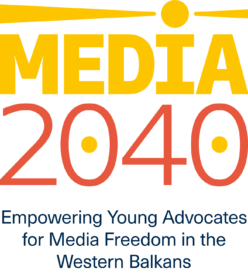OWNERSHIP
How transparent is media ownership? What are the ownership structures of major media? Is there monopolization, concentration or state ownership in the media? What are the key regional players?
- Media ownership is relatively transparent in MKD, MNE (with the exception of non-profit media), while the transparency is lacking in other media systems (SRB, KOS, ALB, BIH).
- Media markets are highly saturated, with the trend of decreasing of the number of media (except in SRB).
- Most major media in the region are private, with the exception of public service media. In some countries, public service media also exists on regional (SRB) or local level (MNE), whereas in BiH there are three public service media: two entity public broadcasters and one state broadcaster.
- Legislation prevents ownership concentration in most markets, except on KOS and BIH. Nevertheless, the lack of regular and transparent audience data, and inefficient institutions prevent full oversight.
- In ALB, BIH and KOS audience and revenues remain highly concentrated in the hands of a few, family-owned groups, which dominate the media market. Cross-media concentration is a problem for SRB. Relatively plural media market is to be found in MKD and BIH. In MNE, four out of five TV stations with national frequency are owned by SRB structur
- United Media with its operations in BIH, MNE, SRB, is a growing regional player.
FINANCING
What are the main revenue streams of major media? What is the size of the advertising market? Which media get the largest share of advertising? Are there state subsidies to the media?
- Advertising markets in WB are relatively small, especially compared to the number of media outlets.
- Advertising has a dominant share in the revenue structure of commercial TV channels with national coverage. Other media, especially local media, are struggling to secure advertising money.
- Across the region, most of the media heavily rely on government funding that comes in different shapes and sizes, usually at the expense of editorial independence.
- Following the change of government in MKD in 2016, the ban was placed on state advertising. In other media markets state advertising has a significant political and economic influence.
- Aimed to serve citizens need for quality news, different sets of support mechanisms exist across the region: subsidies to print media (MKD), the Media Diversity and Pluralism Fund (MNE), co-financing of the public interest media content (SRB). However, these mechanisms are usually used in forming clientelistic relations between media and government.
INTERMEDIARIES
What is the role of intermediaries (cable service operators and social media companies) in the media economy?
- There is an outflow of advertising revenues to global communication platforms and social media.
- Cable and mobile service operators are for the most part neutral, although they are the biggest advertisers in some countries (MKD, SRB).
- In SRB, cable service operators are buying cable TV stations and newspapers, and have a growing impact on media market. Strong position of cable operator is also noted in BIH (Republic of Srpska).
CITIZENS
MEDIA USE
What are the shares and ratings of major media? Per market and per media? What is the most popular time of content (news, sports, entertainment, tabloid content)?
- Most of the citizens in WB access news on TV, with the growing number of citizens using smart phones for news consumptions.
- It is estimated that the markets are highly concentrated around national commercial TV channels and public broadcaster. Only in ALB and MKD public service media does not hold the leadership position on the market.
- Print media is on decline, with KOS having not a single print media outlet.
- Citizens are oriented equally to news and entertainment. Orientation towards sensationalistic and tabloid content is growing in some media systems (SRB, BIH).
MEDIA FINANCING
Are citizens willing to pay for news through fees, subscriptions, or micro donations?
- To a large extent, citizens are not ready to finance the media. Even the collection of the tax for public service media poses a significant issue.
- The growing number of smaller media outlets offers subscription and promotes micro donations.
EU DIMENSION
- EU is involved in financing the media through projects and supports different media related initiatives.
- In its annual reports on candidate countries, the EU notices market related challenges for some countries.
- Newly adopted European Media Freedom Act requires safeguards for transparency of media ownership and of the allocation of state advertising.
Key takeaways about Market and economy.
